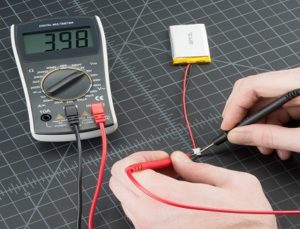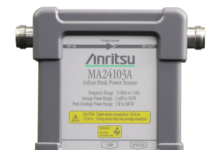
Whereas some people get digital multimeters for industrial or automotive use, others are just hobbyists and makers who don’t really need to use one all the time. Regardless of whichever category you fall under, you owe it to yourself to know some things when it comes to these must-have tools as far as electrical and electronic maintenance is concerned.
Now, before we get started, you should bear in mind that what we’ll be looking at here refers to the handheld digital multimeters. Assuming that you already know what a multimeter is and can carry out some basic functions, let’s get on to it and see what you need to have at your fingertips when using one of these.
1. You should be keen on the multimeter you choose
Like most electrical tools, multimeters too demand a lot of attention. When it comes to getting the best volt-ohm meter, safety should, as a matter of fact, be a priority.
When considering safety, you should consider the measurement location in the sense that the multimeter should have the proper Overvoltage installation category rating. These are normally the CAT II, CAT III or CAT IV ratings. Either of these ratings has got the highest category in which the could be used.
For instance, when you need to measure say 500V, you’ll want to get a multimeter that is rated at CAT III-600V, CAT IV-600V or CAT III-1000V
2. Inspect your multimeter and probes before use
Picking off from the first point, the next thing you’ll want to do when dealing with digital multimeters is closely inspecting it.
First off, you’ll want to start with a visual inspection. Here, you should pay attention to every tiny detail of your digital multimeter and look for any damages that may be present. Now, just because it worked perfectly fine the previous day doesn’t mean that it has to work fine today.
In order to avoid subjecting your digital multimeter to any form of physical damage, you should carefully store it in a protective case right after you use it.
As for the test probes, here’s what you should do:
Even though the multimeter itself may be in perfect physical shape, the same may not be said got the test probes. Similar to the multimeter, you should go ahead and unplug these from their input jacks and confirm that they don’t show any physical damage.
Also check that when inserted in the input jacks, the connection is firm and secure. You should also check the full length of the test probes just to be sure that the insulation is intact. Still, on that note, I’d recommend you stick to test probes that have minimal metal exposed at the tips of the probes since this way, the chances of you touching them and electrocuting yourself is minimal.
Note: when dealing with the test leads, it would be safer to repair them when the insulation is compromised as compared to taping them up.
3. Use protective equipment when dealing with multimeters
Something else that I would recommend you focus on when using multimeters is the use of protective attire. The last thing you want is your body becoming part of an electric circuit. As such, if you don’t have any gloves on, ensure your hands are completely dry.
Secondly, gloves are a must have if you are dealing with high electric currents and still on that note, I’d recommend that you do pay attention to visual warnings on the display
4. The voltage transients
We’ve taken a look at how you could be safe when using a digital multimeter. As important as the above 3 points are, let’s now have a look at some of the dangers you could encounter when using multimeters. The first and most common one is the voltage transient or simply put, spikes in voltage levels
This normally happens when the voltage within a system goes way beyond what it is meant to. Say for instance in a 400V system, the voltage level spikes all the way up to 10,000 volts occasionally. This could be caused by anything ranging from lightning striking an outdoor line to being generated by motors or capacitors.
Some of the voltage transients may be reduced till negligible. Just to be safe, however, you should focus on choosing the right multimeter. For a single-phase receptacle connected loads, go for a CAT II rated multimeter, for a three-phase distribution, go for a CAT III multimeter and for a three-phase connection at utility level and any outdoor conductors, go for a CAT IV rated multimeter.
5. Don’t leave the multimeter at the ohm setting
One of the most common human complacency errors that people make when using multimeter leaving the multimeter at the ohm setting when you’re measuring voltage.
Though some multimeters can handle the voltage even when at the ohm setting, older, unfortunately, cannot be able to do this. The end result of testing a circuit with the multimeter set wrongly is that you may end up with a sparking meter or even blow yours up which is something you don’t really want to happen, right?
6. Switch the probe sockets when necessary
Yet another big mistake that most people do when using their multimeters is forgetting to change the probe. Yes, you’ll hardly forget to turn the dial from the voltage to the ampere measurement station but it’s not really enough.
The best multimeters normally let out a beep when you forget to switch the probes and the flip side of the coin is that for the multimeters that don’t have a beep alert can have really devastating results
7. Always observe the voltage limit of the multimeter
Whether you are using your multimeter for basic home maintenance, on automotive or for industrial use, it’s important that you pay attention to the set voltage limit.
Measuring say a 2000-volt system with a multimeter that is rated at 600-volts could be really hazardous and not only will it blow up the multimeter but it could also result to a fire hence property destruction and the possibility of a loss of lives.
Regardless of whether you are in a hurry or having a bad day, always be keen on the voltage limit.
8. Have the dial set at the correct measurement range
Assuming that you have a basic understanding of how electric circuits and electronics work, the next thing you’ll want to be watchful on when using a volt-ohm meter is the dial/knob, especially when using a manual ranging multimeter.
Even though most multimeters that are being manufactured today are auto-ranging, some people prefer working with the manual ranging multimeters. With the latter, the multimeter will not select the most suitable range of measurement for you and as such, taking measurements may be somewhat difficult.
When using an auto-ranging multimeter however, the range will automatically be picked for you provided you have chosen the correct unit of measurement.
9. Refer to the user manual just in case you’re in doubt
Even the most experienced electricians are bound to make mistakes once in a while, right? This, however, does not mean that everything you’re doing has to stop or you have to risk your own safety when troubleshooting electrical equipment.
The best of multimeters normally come with an easy to understand user manual such that when in doubt, it will be easy for you to work your way around things. From changing the multimeter batteries to having the dial at the correct measurement station, the user manual should be able to guide you effectively on all you should do.
Another important reason as to why the user manual should be adhered to is that it also does serve as the safety manual which should let you know how and where to use the digital multimeter.
10. Pay attention to the visualization depending on the task it’s meant for
As accurate as it may be, a multimeter wouldn’t really be any good if you couldn’t be able to see what you’re doing, right? As such, I’d recommend that you pay attention to the display.
The higher the resolution, the better of the multimeter is but this doesn’t determine the accuracy. The accuracy is determined as a range with an upper and lower bound. With this combined with the high resolution, you’ll be getting a really amazing picture quality.
Conclusion
There’s clearly a lot that should be taken into consideration when using a digital multimeter and form what we’ve looked at, ignoring something really simple such as having the test probes in the wrong jack could blow up your digital multimeter.
When buying one especially for the first time, I’d recommend that you do choose one that is from a reputed brand, the last thing you want is to compromise your safety.
It’s also important to buy one after determining the highest category you will be working in and more so, look for one with a voltage rating category that matches your needs- for instance, an industrial multimeter could be used for home maintenance but the opposite is not applicable.


















